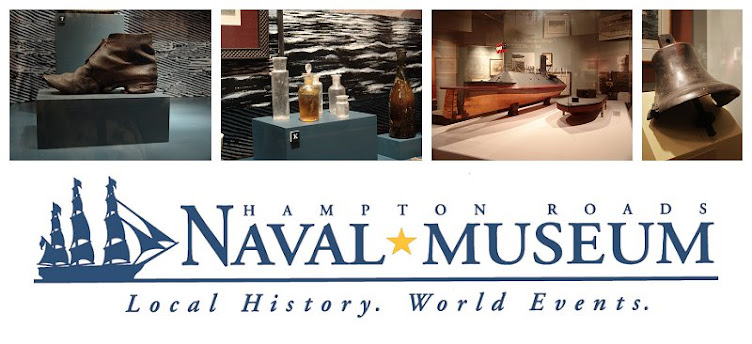Reviewed by Lee Duckworth, HRNM docent
From Yeomanettes to Fighter Jets covers a century of the role of women in the U.S. Navy as author Randy Carol Goguen paints a vivid canvas of their storied advancement. Her book is divided into four phases: 1917-1947 militarization; 1948-1966 marginalization; 1967-1993 transition; and 1994 to present. Goguen’s book goes into great detail surrounding the economic and political conditions, and cultural and technological changes that both plagued and advanced their cause.
The path to progress for Navy women is highlighted by examples of some unlikely leaders with unique personalities and views that bolstered women’s rights over the course of the century. She opens the book in 1917 with Josephus Daniels, the secretary of the navy who acted independently of the secretary of war and others, including senior navy officers. Daniels took advantage of a gap in law (others later do the same) with the Naval Reserve Act of 1916 which didn’t specify sex as defining eligibility to bring women into the navy. Eventually, 11,880 women served as yeoman (F) during WWI and the author details how the exigency of war prevented others from overriding this new policy.
 |
| Four Yeoman (F) in the late 1910s (NHHC) |
Though openings were advertised for numerous positions, WWI Navy women were assigned mostly administrative duties. The author’s premise is that new technology, such as the typewriter and telephone, opened opportunities for women and, as there were many unknowns as to how this technology would be used, little prejudice against women had developed. Despite the overall satisfaction of the performance of the yeomen (F), they were rapidly discharged at the end of the war.
Goguen’s research reveals that during the inter-war period, only two offices (Bureau of Aeronautics and Office of the Chief of Naval Operations) were “positive” about allowing women in the Navy. As aviation was a “new” industry, there were no preexisting barriers or traditions in that field to break down. A wide variety of billets were opened to women but they (other than nurses) were not allowed to serve outside the continental United States or aboard vessels or combat aircraft. Additional detail and discussion of the WWII era would have provided a more even balance to the book.
 |
| Members of the first class of WAVES to graduate from the Aviation Metalsmith School, at the Naval Air Technical Training Center, Norman, Oklahoma, 1943. (NHHC) |
The concept of separate spheres for men and women enjoyed a resurgence in the post-WWII era, marginalizing military women for the ensuing three decades. In June 1948 the first peacetime draft was initiated, with a two percent ceiling established for women in the total force. Several factions wanted to retain women in a “reserve status” while others felt a need for regular commissions. Most of the service leaders supported a regular commission for women, though Congress did not. President Harry Truman signed the 1948 Women’s Armed Service Integration Act, which set permanent status for women in regular components in the armed forces, though they were prohibited from going to sea in ships other than transports and hospital ships. Yet, two years later when the Korean War broke out, an active-duty recall was established which included women.
By the mid-1960s, despite much controversy over the Equal Rights Amendment (ERA), cultural attitudes toward women in the Navy had changed little since 1917. The author goes into great depth as to how Chief of Naval Operations Adm. Elmo Zumwalt Jr. charted a new course for Navy women by expanding opportunities. As the advent of the telephone in the WWI era provided a viable career path for Navy women, development of the Integrated Undersea Surveillance System (IUSS) specialty did the same in the 1970s.
The final section of her book goes into significant detail of the turmoil of the late 1980s and the initiatives and changes to allow women on combat ships and aircraft. During those strained times, Congress, SecNav, CNO, and presidential influence wavered greatly, depending on who was in office. The Tailhook scandal of 1991 demonstrated a catastrophic failure of leadership, yet finally opened the door for Navy women to go to combat.
 |
| Airman Ora Howard, Plane Captain, (left), and Airman Grisselle Martinez, perform a routine maintenance on an A-7 Corsair II aircraft, November 1988. (US Navy) |
The author delineates the rapid progress in the 1990s and recognition that successful integration could be achieved in units that possessed an excellent command climate and strong leadership. By the early 2000s, successful integration in aircraft and ships was commonplace and warfare specialties became available to women in nearly every area of the U.S. Navy. The integration of women into the Navy succeeded despite the cultural challenges. Set in motion by the exigency of war, progress in the first half of the twentieth century and scandals in the second half led to eventual qualification for sea-going and combat assignments.


.jpg)







%20(cropped).PNG)
.jpg)
.jpg)
%20(cropped).PNG)
%20(Image%20from%20wikimedia.org)%20(002).png)
%20monument%20in%20Newport%20News,%20Virginia%20(Image%20from%20hmdb.org).jpg)

_at_Mare_Island_on_16_October_1913_(NH_52365).jpg)
_underway_in_June_1927_(cropped).jpg)





